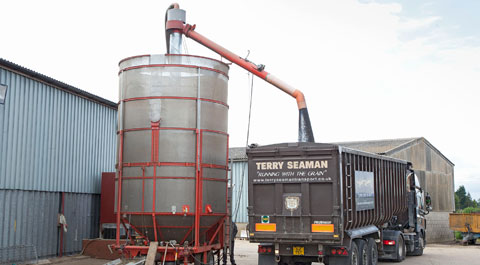Video: Getting the best from a Master mobile dryer

The mobile grain dryer is clearly now a viable alternative to a fixed dryer – their capacities and drying outputs have increased over the years so that there are models to suit all but the largest of arable farms and the high degree of automation means they can be left to run unattended for long periods of the day.
As part of a series of articles and videos which set out to explain to users how to get the best from their machinery, Andy Collings takes a look at the workings of a mobile grain dryer – a Master Farm Dryer, which uses three-phase electricity to power its motors and diesel fuel to provide the heat which dries the grain.
A 27t capacity dryer is reported by Master Farm to be one of the most popular sizes for UK farmers. It’s worth remembering, though, that capacity is not output. Output is determined by the machine’s ability to dry grain in terms of tonnes per hour.
Some dryers are pto-driven, which means that a tractor is tied up all day long, and others use three-phase electricity to power the motors. For farms not connected to three-phase, the pto drive may be the only option short of investing in a generator.
1. This dryer has an autolube system, which provides grease to all of the bearings on the machine. Extreme care needs to be taken when refilling to avoid any contamination of the grease. Check the grease is arriving at the bearings.
2. Mobile dryers need to be level – adjust the screw jacks accordingly and check that the spirit levels indicate the machine is level.
3. Check that the auger “dog” connection is such that the auger flights are continuous and not half a turn out.
4. While the dryer is empty, check that the screens which form the plenum chamber are not clogged – air needs to be able to pass through these screens to take away the moisture.
5. The control box and the brains of the operating system. Check the action of the buttons and keep the door closed when the dryer is working to exclude dust.
6. The moisture meter displays the current moisture of grain as it is dried, but this still needs to be backed up with sample tests, says Master Farm.
7. The burner needs to be inspected to ensure the ignition electrodes are in working order and that the light sensor which tells the operating system the flame is lit is not covered with soot or dust.
8. The fuel pressure gauge indicates that the fuel is being pumped properly but any fluctuations could indicate a blocked filter.
9. Diesel filters need to be changed as part of a pre-season maintenance check. Some dryers are operated using gas as its source of heat production.
10. Key to the dryer is the central auger which moves 70t/hour to provide a recirculation of the grain through the dryer. As with the intake auger check the “dog” connection is properly aligned.
11. Drive for the central vertical auger is by belt – check for condition and change if damaged.
12. In the base of the of the grain holding section is an agitator – three paddles – which rotate and prevent any bridging of the grain as it

